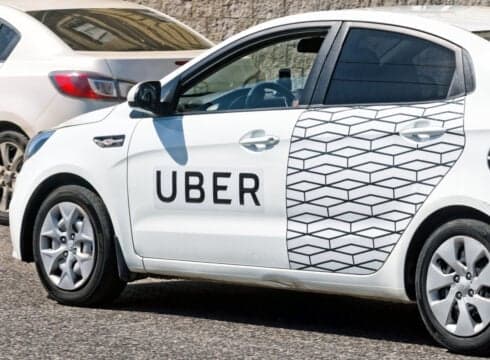The company is in discussions with traditional taxi operators in India to work through its third-party taxi integration service
Uber India’s move comes after it signed a pact with Tata Motors to introduce 25,000 EVs in the premium category
In India, Uber – and other ride-hailing services for that matter – has struggled with an acute shortage of cabs
Inc42 Daily Brief
Stay Ahead With Daily News & Analysis on India’s Tech & Startup Economy
Ride-hailing major Uber is reportedly looking to partner with third-party taxi providers to buff up its cab fleet. This is also part of a global initiative to curb the shrinking cab fleets across the world.
The company is talking with private and traditional taxi operators in India to work through its third-party taxi integration service.
Manikandan Thangarathnam, the senior director of mobility and platforms engineering at Uber, told ET that Uber is in talks with a long list of taxi companies to integrate its services. He added that in India as well, there are several companies Uber is in talks with.
The senior official noted that Uber is working through a priority list and India is around the top. “This year you should see some integrations happening,” he added.
Uber’s move to increase the number of cars in its fleet comes days after it signed a pact with Tata Motors to introduce 25,000 electric vehicles (EVs) in the premium category service on its platform.
Incidentally, this is not a new initiative as far as Uber is concerned. It started third-party integrations two years ago and is planning to scale up the taxis from 50 to 500 cities globally. The US-based mobility giant has set a target of onboarding all taxis in the world onto the Uber platform by 2025.
With third-party integrations, Uber seeks to double its growth as it keeps inching closer to profitability. Uber India incurred a net loss of INR 216 Cr in FY22, down 35% from INR 333.9 Cr in FY21.
“This is a quick way for us to enter new markets, new cities where we are not operating,” Thangarathnam was cited by ET as saying about the third-party integrations.
How Third-Party Drivers Work For Uber?
In India, Uber – and other ride-hailing services for that matter – has struggled with an acute shortage of cabs. Post-pandemic, these cab aggregators have struggled to meet demand even more.
Inc42 reported in 2021 that Uber and Ola together had lost as many as 30,000 drivers between September 2020 and May 2021, as a result of drivers struggling to pay EMIs for car loans as the pandemic brought the ride-hailing industry to its knees.
Coupled with rising fuel prices and lesser incentives from ride-hailing companies, drivers have had less and less reason to return. Further, category-specific players have also emerged, including the likes of Rapido for bike and auto taxis, forcing Uber and Ola to also look at the category.
The drivers native to the Uber app are called first-party drivers, while the other taxi drivers are third-party drivers. The company has developed software that would act as an operating system for taxi companies, the same way the likes of OYO and RateGain have done for hotels.
Thangarathram said these third-party taxis help solve the problem of the lack of supply of cars in the past few quarters. Uber plans to initially work with large taxi operators, then move to smaller operators and individual drivers.
{{#name}}{{name}}{{/name}}{{^name}}-{{/name}}
{{#description}}{{description}}...{{/description}}{{^description}}-{{/description}}
Note: We at Inc42 take our ethics very seriously. More information about it can be found here.


